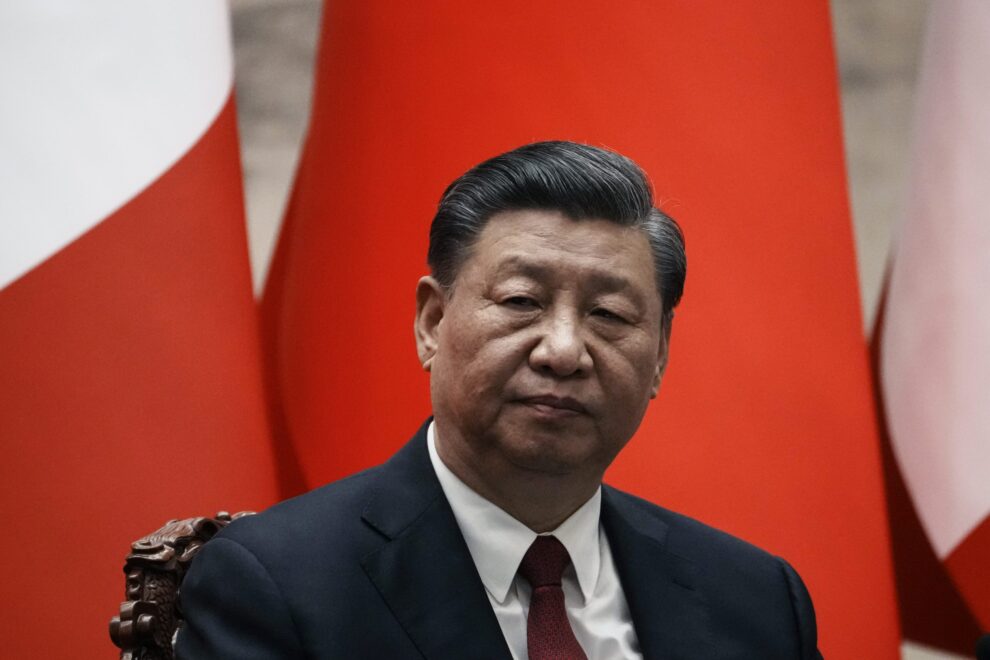- China is moving to fill a strategic vacuum in Central Asia created by the erosion of Russia’s influence in the countries of the former Soviet Union.
- Russia’s ill-fated invasion of Ukraine accelerated Central Asia’s economic and political gravitation toward China, but also the United States and Europe.
- The China-Central Asia summit in Xi’an in mid-May, which excluded Russia, illustrated China’s role as a senior partner, in contrast to Russia, countering Western global hegemony.
- China assesses the Central Asian countries as easily accessible and reliable suppliers of energy, minerals, and other resources, and Central Asian leaders see Beijing as a potential alternative to Moscow in providing security and development assistance.
As Western leaders of the G7 were preparing for their summit in Japan, China’s leader Xi Jinping hosted his Central Asian counterparts from Kazakhstan, Kyrgyzstan, Tajikistan, Turkmenistan, and Uzbekistan in Xi’an for the first-ever China-Central Asia summit on May 18-19. The Xi’an summit was particularly noteworthy for excluding Russia, particularly as the Central Asian states were all republics in the former Soviet Union, and have been considered by Russian President Vladimir Putin as within Russia’s “sphere of influence,” despite becoming independent states upon the collapse of the Soviet Union in 1991. Tajikistan, for example, continues to host Russian troops to help maintain border security, deter internal conflict among regionally based political factions, and counter terrorist groups that now have a measure of safe haven in Taliban-controlled Afghanistan and neighboring Pakistan. Whether intentional or not, the China-Central Asia summit seemed to affirm Russia’s diminished status in the region – accelerated by the losses Russia has suffered in its war in Ukraine. The invasion has isolated Russia economically and politically from the West, further reducing its attractiveness as a partner to the Central Asian states that have long sought greater integration into the global economy and reduced dependence on Moscow.
By organizing the Xi’an meeting, Xi reaffirmed for many experts that, partially as a consequence of the setbacks of its Ukraine invasion, Putin’s Russia has seemingly become subordinate to China as a partner in a joint struggle to reduce the global economic, security, and political influence of the United States and its European allies. Russia and China continue to engage at high levels, including direct Putin – Xi meetings and, most recently, the late May visit by Russian Prime Minister Mikhail Mishustin to Beijing. But China has not supplied Moscow with offensive weaponry as many feared, and Beijing has recently dispatched diplomats to both Russia and Ukraine to advance Beijing’s 12-point plan to try to settle the conflict. China’s professions of continued partnership with Russia appear intended, at least to some extent, to try to prevent a collapse of the Russian political and economic system at the hands of Western sanctions pressure and military support for Kyiv.
The apparent turn by Central Asian leaders away from Moscow and toward Beijing has been accelerated by – but long predates – Moscow’s decision to attack Ukraine. Central Asian leaders began to shift towards China a decade ago as it became clear that Russia’s lack of economic dynamism rendered Moscow’s regional integration project – the Eurasian Economic Union – a pale comparison to China’s massive global Belt and Road Initiative (BRI). The BRI’s program of infrastructure investment – spanning at least 139 countries and costing an estimated several trillion dollars – was launched by Xi in Kazakhstan in 2013. The initial intent of the BRI was to improve China’s access to the large markets in Europe, but it has evolved into a broader push by China to expand its influence in much of the Global South and, particularly, in Central and South Asia. The BRI has helped draw Central Asia closer to China not just economically but also politically. According to China’s Ministry of Commerce, the trade volume in goods between China and the five Central Asia countries rose from $460 million in 1992 to more than $70 billion in 2022.
Seizing an opportunity to try and replace Moscow as the most influential power in Central Asia, President Xi, in his opening address at the China-Central Asia summit, articulated a “vision of a China-central Asia community with a shared future” resting on four principles: mutual assistance, common development, universal security, and everlasting friendship. The People’s Daily, a key Chinese state media outlet, quoted Xi as indirectly contrasting China’s approach to the region with that of the Kremlin, which still views the Central Asian leaders as pliable and unquestioning subordinates, saying that Xi: “…stressed [that] the sovereignty, security, independence and territorial integrity of Central Asian countries must be upheld, their people’s choice of development paths must be respected, and their efforts for peace, harmony, and tranquility must be supported.” Xi’s emphasis on the sovereignty of the Central Asian states played on a key Russian weakness – the perception, fueled by the Ukraine invasion and other acts of aggression in Russia’s “near abroad” – that President Putin will use armed force to preserve Moscow’s influence in former Soviet states. The Central Asian states all host large Russian-speaking populations that Putin might cite as justification for intervention in any of the Central Asian countries. Yet, unlike the United States and its European Union allies – which Central Asian leaders also are courting as potential economic and security partners – China shares with the Central Asian states a more authoritarian model of governance and will not pressure the Central Asian leaders to move towards democracy or strong human rights protections.
The summit results suggested that China and the Central Asian states are eager for expanded relations: the meetings produced 54 agreements, 19 new cooperation mechanisms and platforms, and nine multilateral documents. The countries at the summit recommitted to highways from China to Kyrgyzstan, Tajikistan, and Uzbekistan; to a China-Kyrgyzstan-Uzbekistan railway; and to transport infrastructure for trans-Caspian trade routes using seaports in Kazakhstan and in Turkmenistan. The focus on transport infrastructure in and across Central Asia highlights how important the region is for China’s attempts to expand and diversify its trade routes to Europe away from Russia. The agreements among the leaders also reflect how crucial Beijing views Central Asia as a reliable and nearby source of oil and gas, coal, minerals, hydroelectric power, agricultural products, and other resources. Utilizing the China-Central Asia gas pipeline, China’s first transnational gas pipeline, Turkmenistan, Uzbekistan, and Kazakhstan have dramatically increased their natural gas exports to China. More than two-thirds of China’s gas pipeline imports came from Central Asia in 2022. China is also a significant market for Kazakhstan’s extensive oil exports, and China’s purchases have helped Kazakhstan maintain its oil export volumes even as shipments of oil to Europe have declined as EU countries have shifted to cleaner sources of energy. For the Central Asian leaders, Beijing committed to helping them enhance their law enforcement and security capabilities. The security element of the summit, although greatly muted compared to the economic and energy issues discussed by the leaders, aligns with Beijing’s intensifying campaign for “global security” while also signaling that Moscow will no longer have a monopoly on Central Asia’s security arrangements, even though its arms deliveries to the region still outpace China in terms of quantity and sophistication.
Source: The Soufan Center















